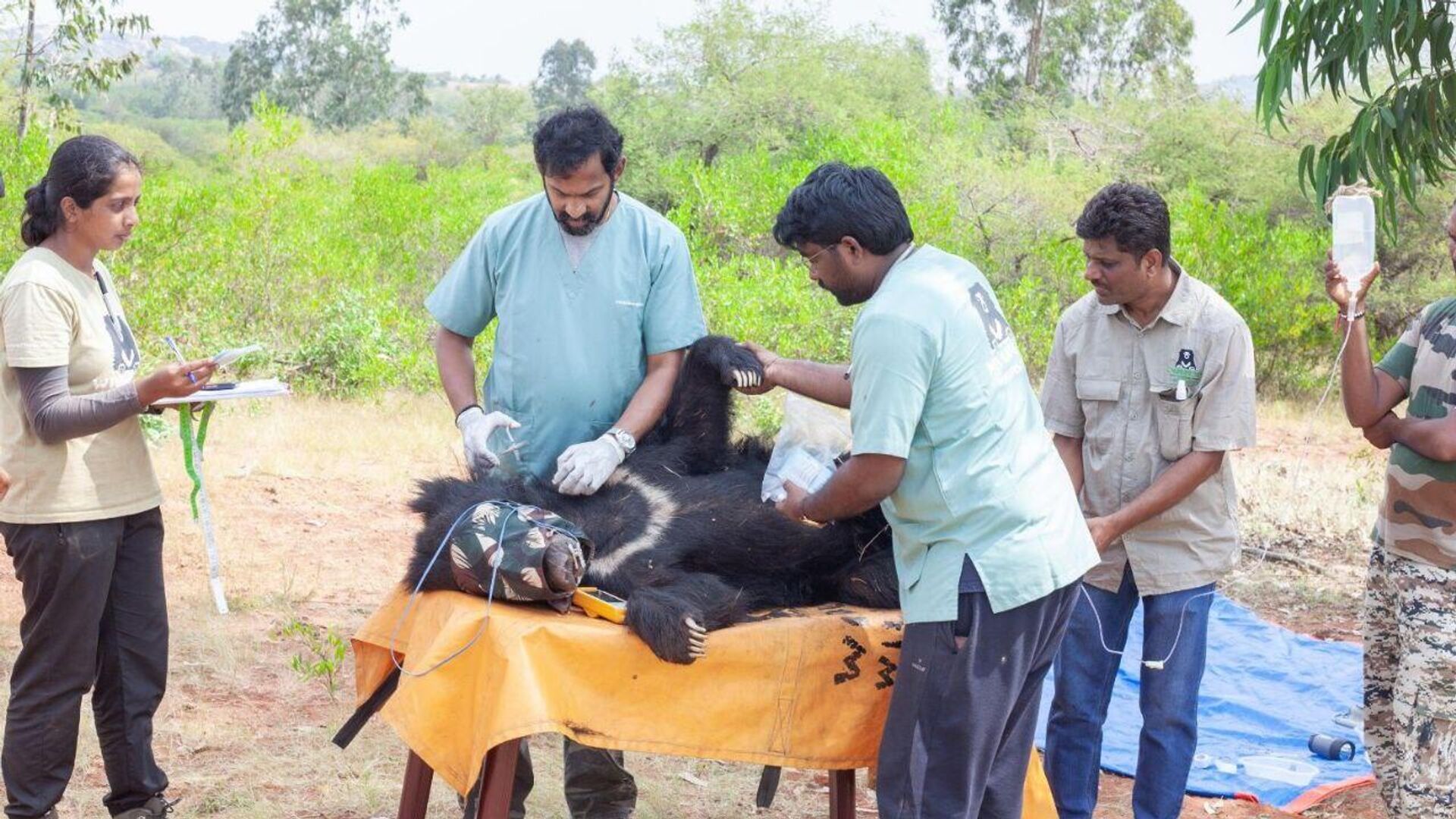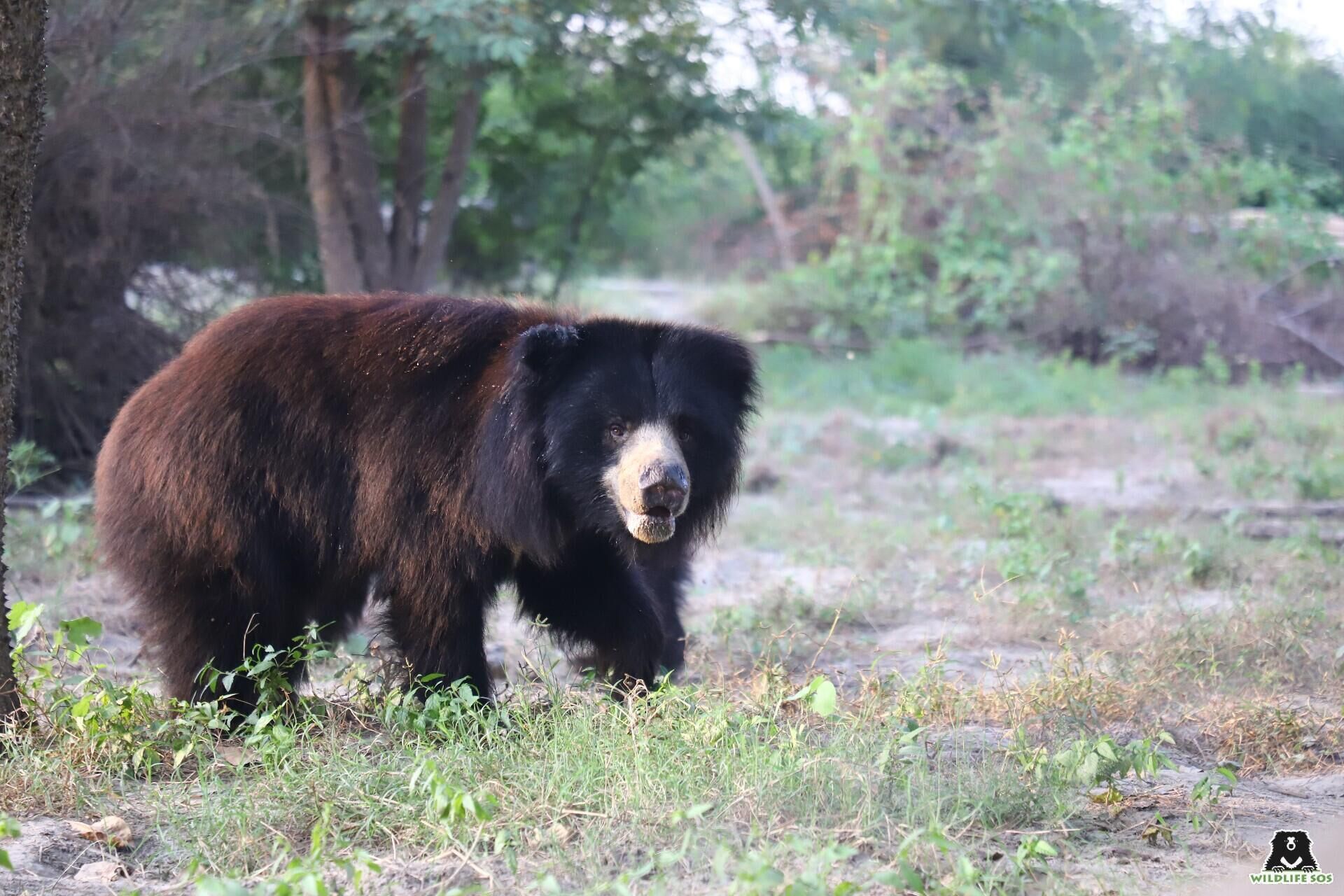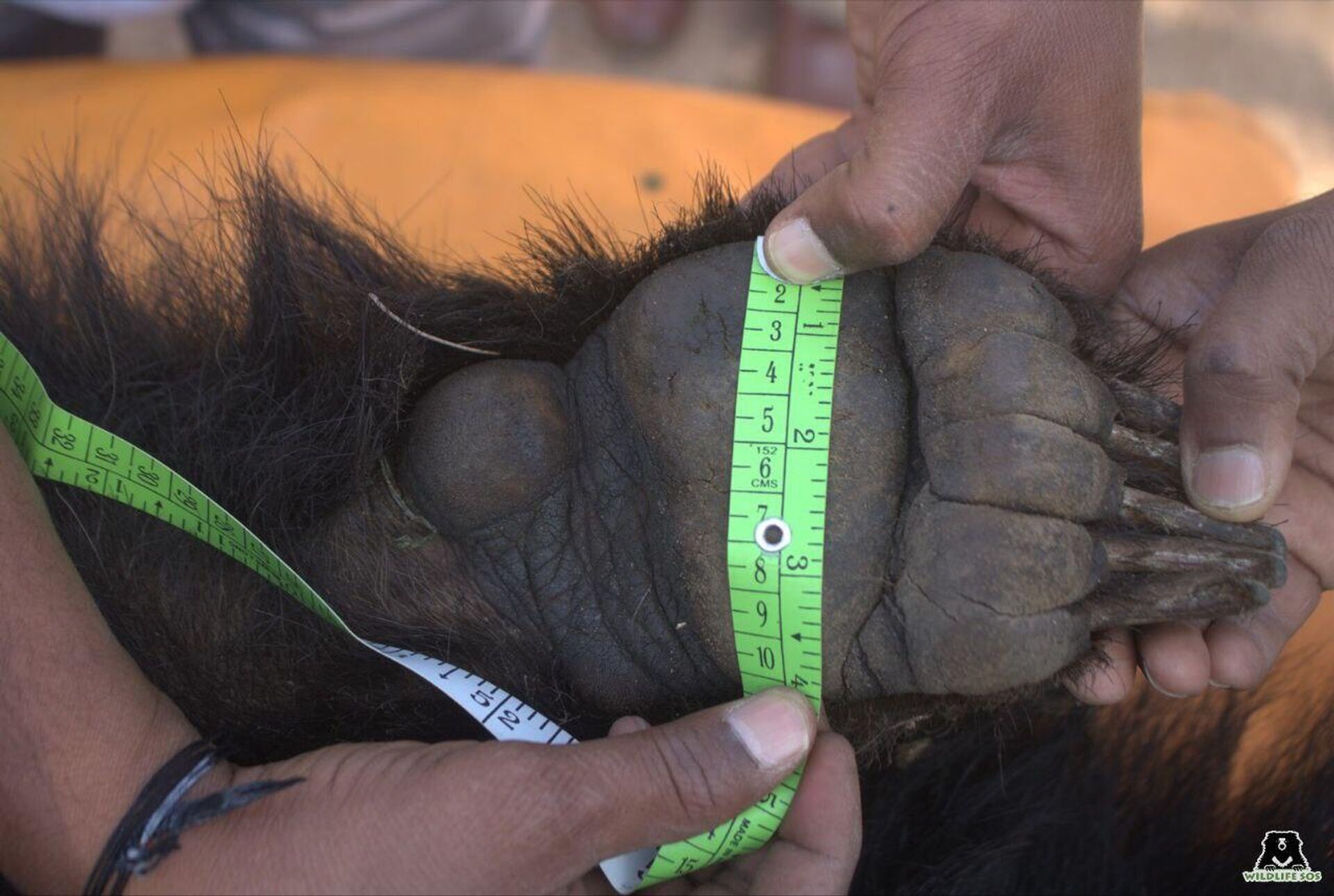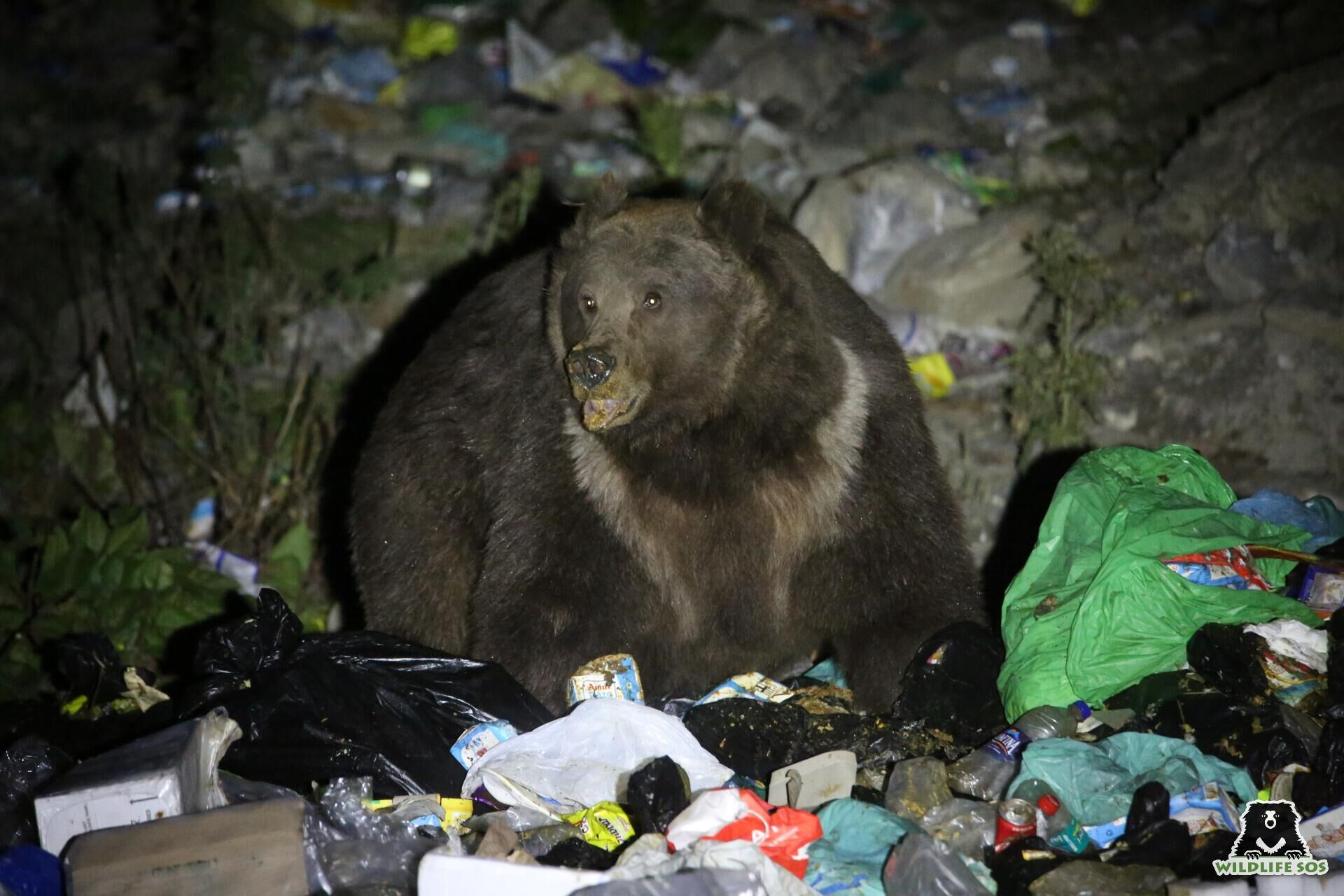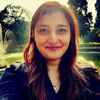https://sputniknews.in/20240403/bear-conservation-in-india-gains-momentum-with-latest-tracking-technology-7018681.html
Bear Conservation in India Gains Momentum With Latest Tracking Technology
Bear Conservation in India Gains Momentum With Latest Tracking Technology
Sputnik India
Having put an end to the 400-year-old tradition of 'dancing' bears, the Wildlife SOS is now spearheading a Radio Collaring Project across India to conserve this species in the wild.
2024-04-03T15:58+0530
2024-04-03T15:58+0530
2024-04-03T15:58+0530
sputnik exclusives
india
wildlife
science & tech
karnataka
jammu
nature conservation
animal rights
animal extinction
bears
https://cdn1.img.sputniknews.in/img/07e8/04/02/7020015_0:80:1280:800_1920x0_80_0_0_60801cabf39a0d76fd508db383502d82.jpg
India is home to four magnificent bear species – the Asiatic black bear, Himalayan brown bear, sloth bear, and sun bear. However, these incredible creatures face a significant threat to their survival as they confront multiple challenges, including poaching for their fur, claws and organs, habitat loss, encroachment on their territories, and retaliatory actions.The Radio Collaring Project by Wildlife SOS has played a vital role in leading the conservation efforts for the vulnerable sloth bears in Karnataka, as well as for Asiatic black bears and Himalayan bears in Jammu and Kashmir through extensive research work.GPS-Enabled Radio-collar and Tracked System Kartick Satyanarayan, the co-founder and CEO of Wildlife SOS, who is famously known as "The Bear Man of India," explained to Sputnik India how the GPS-enabled radio collar and tracking system operate.Radio telemetry, on the other hand, allows researchers to gain valuable insights into the interactions between individual bears and their natural environment.Additionally, the team analyses indirect indicators such as scat, foraging behaviour, and pugmarks to effectively monitor the bear population.The data further provides crucial insights into the use of habitat corridors, water and food resources and the impact of infrastructure like roads, he added.Sloth Bear Radio-Collaring in KarnatakaTo address the growing human-bear conflict, Wildlife SOS initiated a radio-collaring project sloth bears in three districts namely Bellary, Kopal, and Tumkur in Karnataka in 2022 to investigate the causes and dynamics of this issue.Swaminathan S, senior field biologist at Wildlife SOS, told Sputnik India a total of nine sloth bears have been successfully radio-collared under the project, with more collaring operations scheduled in the future.The research revealed that the sloth bear population in Karnataka is severely fragmented due to anthropogenic activities such as infrastructure projects, cultivation, plantation and mining activities.Conservation of Asiatic Black Bears & Himalayan Brown BearFrom habitat loss due to the timber industry to forest fires, militancy and encroachment in buffer areas, several challenges pose major threats to Asiatic black bears, also known as moon bears, and critically endangered Himalayan brown bears in Jammu and Kashmir.The research on Asiatic Black Bears and Himalayan Brown Bear in J&K through the radio-collaring system revealed that in a span of 20 years (from 2000 to 2020), a total of 2,357 bear attacks were recorded.Due to the implementation of awareness campaigns and the active involvement of the Wildlife Protection Department since 2016, the frequency of attacks has significantly declined, he added.The wildlife experts managed to bring down the frequency of bear attacks and also started two rescue centres in Pahalgam and Dachigam which is home to a total of six Asiatic black bears.
https://sputniknews.in/20230528/meet-bear-man-of-india-who-is-on-a-rescue-mission-to-save-wild-animals-2190706.html
india
karnataka
jammu
Sputnik India
feedback.hindi@sputniknews.com
+74956456601
MIA „Rossiya Segodnya“
2024
Sangeeta Yadav
https://cdn1.img.sputniknews.in/img/07e6/0c/0f/110602_0:0:641:640_100x100_80_0_0_c298016a79eb02ef8caa9d1f688c12a5.jpg
Sangeeta Yadav
https://cdn1.img.sputniknews.in/img/07e6/0c/0f/110602_0:0:641:640_100x100_80_0_0_c298016a79eb02ef8caa9d1f688c12a5.jpg
News
en_IN
Sputnik India
feedback.hindi@sputniknews.com
+74956456601
MIA „Rossiya Segodnya“
Sputnik India
feedback.hindi@sputniknews.com
+74956456601
MIA „Rossiya Segodnya“
Sangeeta Yadav
https://cdn1.img.sputniknews.in/img/07e6/0c/0f/110602_0:0:641:640_100x100_80_0_0_c298016a79eb02ef8caa9d1f688c12a5.jpg
the bear man of india, savior of wild animals, kartick satyanarayan wildlife enthusiast, sloth bears, illegal practise of dancing bears in india, plight of sloth bears, bears subjected to abuse and torture by kalandar community, wildlife sos, geeta seshamani, community development work, rehabilitation of sloth bear, kartick satyanarayan, dancing bears in india, dancing bears in south asia, saving bears, animal abuse in india, gpr radio collaring project, tracking technology, bear species, asiatic black bear, himalayan brown bear, sloth bear, sun bear, poaching, fur, claws, organs, habitat loss, encroachment, territory,
the bear man of india, savior of wild animals, kartick satyanarayan wildlife enthusiast, sloth bears, illegal practise of dancing bears in india, plight of sloth bears, bears subjected to abuse and torture by kalandar community, wildlife sos, geeta seshamani, community development work, rehabilitation of sloth bear, kartick satyanarayan, dancing bears in india, dancing bears in south asia, saving bears, animal abuse in india, gpr radio collaring project, tracking technology, bear species, asiatic black bear, himalayan brown bear, sloth bear, sun bear, poaching, fur, claws, organs, habitat loss, encroachment, territory,
Bear Conservation in India Gains Momentum With Latest Tracking Technology
By rescuing and rehabilitating more than 620 sloth bears from the streets of India, Wildlife SOS has not only put an end to the 400-year-old tradition of 'dancing' bears but also embarked on a groundbreaking Radio Collaring Project to ensure its conservation in the wild.
India is home to four magnificent bear species – the Asiatic black bear, Himalayan brown bear, sloth bear, and sun bear. However, these incredible creatures face a significant threat to their survival as they confront multiple challenges, including poaching for their fur, claws and organs, habitat loss, encroachment on their territories, and retaliatory actions.
The Radio Collaring Project by
Wildlife SOS has played a vital role in leading the conservation efforts for the vulnerable sloth bears in
Karnataka, as well as for Asiatic black bears and Himalayan bears in
Jammu and Kashmir through extensive research work.
Recent advances in radio-collaring technology have revolutionized the way researchers track and study bear behaviour, and prepare management strategies for its conservation and peaceful co-existence with humans.
GPS-Enabled Radio-collar and Tracked System
Kartick Satyanarayan, the co-founder and CEO of Wildlife SOS, who is famously known as "The Bear Man of India," explained to Sputnik India how the GPS-enabled radio collar and tracking system operate.
"From laying out barrel traps, tranquilising the bears with the assistance of the forest department, attaching the GPS collars to keeping them under observation for hours before being released back into the wild, the radio collaring process of the bear is a meticulous and careful operation," Satyanarayan said.
Radio telemetry, on the other hand, allows researchers to gain valuable insights into the interactions between individual bears and their natural environment.
Additionally, the team analyses indirect indicators such as scat, foraging behaviour, and pugmarks to effectively monitor the bear population.
"The information gathered from the GPS collars aids researchers in comprehending the movement patterns, territories, and habitat preferences of the bears. This, in turn, contributes to the development of enhanced strategies for conservation and management," Satyanarayan said.
The data further provides crucial insights into the use of habitat corridors, water and food resources and the impact of infrastructure like roads, he added.
Sloth Bear Radio-Collaring in Karnataka
To address the growing human-bear conflict, Wildlife SOS initiated a radio-collaring project sloth bears in three districts namely Bellary, Kopal, and Tumkur in Karnataka in 2022 to investigate the causes and dynamics of this issue.
Swaminathan S, senior field biologist at Wildlife SOS, told Sputnik India a total of nine sloth bears have been successfully radio-collared under the project, with more collaring operations scheduled in the future.
The research revealed that the sloth bear population in Karnataka is severely fragmented due to anthropogenic activities such as infrastructure projects, cultivation, plantation and mining activities.
"The Gudekote Sloth Bear Sanctuary in the Bellary district is fragmented into five regions, with villages scattered throughout the entire protected area. The sloth bears move across these patches inhabited by humans in search of essential natural resources like water, food, and shelter, leading to conflicts," Swaminathan explained.
Conservation of Asiatic Black Bears & Himalayan Brown Bear
From habitat loss due to the timber industry to forest fires, militancy and encroachment in buffer areas, several challenges pose major threats to Asiatic black bears, also known as moon bears, and critically endangered Himalayan brown bears in Jammu and Kashmir.
The research on Asiatic Black Bears and Himalayan Brown Bear in
J&K through the radio-collaring system revealed that in a span of 20 years (from 2000 to 2020), a total of 2,357 bear attacks were recorded.
"75% of the diet of the bears who frequented human-made garbage dumps included plastic, chocolates, and organic food waste. The improper disposal of waste is a major factor that attracts bears close to human settlements, thereby increasing the risk of direct conflict and attacks," Swaminathan said.
Due to the implementation of awareness campaigns and the active involvement of the Wildlife Protection Department since 2016, the frequency of attacks has significantly declined, he added.
The wildlife experts managed to bring down the frequency of bear attacks and also started two rescue centres in Pahalgam and Dachigam which is home to a total of six Asiatic black bears.
